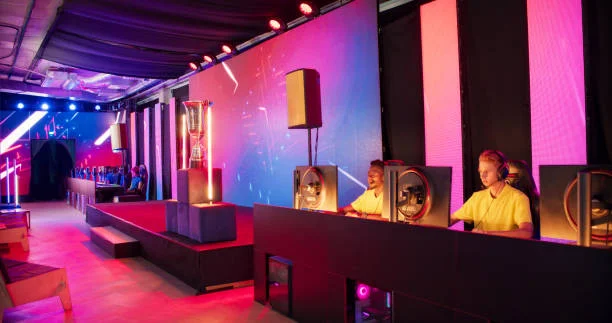Sound shapes human behavior in ways so fundamental that we rarely notice its influence—until something goes wrong. A microphone that cuts out during a crucial presentation, background noise that makes conversation impossible, or acoustics that create echo and confusion can instantly undermine even the most carefully planned corporate event. Yet sound design remains one of the most overlooked aspects of corporate event styling, despite its profound impact on communication effectiveness, audience engagement, and perceived professional authority.
The Psychology of Sonic Authority
Human beings make instant judgments about credibility, competence, and authority based on vocal qualities and acoustic environments. A speaker whose voice sounds thin or unclear due to poor sound system design will struggle to establish executive presence, regardless of message quality. Conversely, rich, clear audio reproduction can enhance perceived expertise and leadership capability.
Corporate event styling must therefore consider sound design as a fundamental element of brand representation and professional image. The acoustic signature of an event communicates as powerfully as visual design choices. Crisp, professional audio suggests organizational competence and attention to detail. Poor sound quality implies carelessness and lack of preparation, undermining confidence in the presenting organization.
This psychological impact extends beyond speaker presentations to every aspect of the event experience. The sound of registration check-in, background audio during networking periods, and even the acoustic qualities of conversation spaces all contribute to overall impressions of professionalism and organizational sophistication.
Research in environmental psychology demonstrates that acoustic comfort directly influences cognitive performance, emotional state, and social behavior. Events with well-designed soundscapes keep audiences more alert, engaged, and receptive to key messages. Poor acoustic environments create stress, fatigue, and distraction that can completely neutralize even excellent content and visual presentation.
Related insight: This article dives even deeper into the topic.
Layered Audio Architecture
Sophisticated corporate events require complex audio design that supports multiple simultaneous activities while maintaining clarity and purpose. Unlike simple presentation scenarios with single speakers and uniform audience arrangements, modern corporate events often involve breakout sessions, networking areas, interactive displays, and multimedia presentations occurring in shared or adjacent spaces.
Creating effective acoustic separation without complete physical isolation requires advanced understanding of sound propagation, absorption, and masking techniques. Strategic use of sound-absorbing materials, directional audio systems, and acoustic barriers can create distinct audio zones within larger event spaces. This allows for intimate conversation areas alongside presentation theaters, interactive demonstrations near quiet reflection spaces, and high-energy networking zones adjacent to focused work sessions.
The challenge becomes even more complex when considering the temporal dimension of corporate events. Audio needs change dramatically throughout different program segments. Opening keynotes require maximum clarity and authority. Interactive workshops need sound systems that can accommodate audience participation. Networking periods benefit from carefully curated background audio that encourages conversation without competing for attention.
Professional sound designers approach these challenges through comprehensive acoustic modeling that considers room dimensions, surface materials, audience density, and activity patterns. They design systems that can be dynamically adjusted throughout the event to optimize acoustic conditions for each program element.
The Neuroscience of Background Audio
Background music and ambient sound in corporate environments involve complex psychological considerations that extend far beyond simple atmosphere creation. Different audio choices directly influence cognitive processing, emotional state, and social behavior in ways that can either support or undermine event objectives.
Research in cognitive psychology demonstrates that background music with lyrics competes with verbal processing, making it inappropriate for situations involving complex information exchange or detailed conversation. Instrumental music with moderate tempo and complexity can enhance cognitive performance and mood without creating interference. However, the specific musical choices must align with audience demographics, cultural context, and intended emotional tone.
Volume levels require particularly careful consideration. Audio that feels comfortable for younger audiences may seem overwhelming to senior executives. Sound levels that work well for high-energy networking may be completely inappropriate for strategic planning sessions. Professional sound design involves creating dynamic systems that can adapt to different audience needs and program requirements.
Silence also functions as a powerful design element in corporate event styling. Strategic use of quiet moments can enhance the impact of subsequent audio elements, provide necessary cognitive processing time, and create opportunities for reflection and integration. The most sophisticated corporate events incorporate carefully planned acoustic pauses that enhance rather than interrupt the overall sound design.
Technology Integration and Audio Clarity
Modern corporate events increasingly integrate complex technological elements that create new challenges and opportunities for sound design. Interactive presentations, video conferencing, digital collaboration tools, and real-time audience response systems all require careful acoustic coordination to function effectively.
The proliferation of mobile devices creates particular complications for corporate event audio design. Audience members with smartphones, tablets, and laptops can inadvertently create acoustic interference through notification sounds, video playback, and voice calls. Professional sound design must anticipate and manage these potential disruptions through strategic use of acoustic masking, clear communication protocols, and backup systems.
Wireless audio technology offers tremendous flexibility for corporate event styling but requires sophisticated technical expertise to implement successfully. Radio frequency interference, battery management, and synchronization challenges can create significant problems if not properly addressed. However, when successfully implemented, wireless audio systems enable dynamic speaker movement, audience interaction, and flexible space utilization that would be impossible with traditional fixed systems.
Recording and documentation requirements add another layer of complexity to corporate event sound design. Audio quality that works well for live audience experience may be completely inadequate for recording purposes. Professional sound design must accommodate both immediate audience needs and documentation requirements without compromising either objective.
Acoustic Branding and Corporate Identity
Forward-thinking organizations recognize that consistent acoustic identity can be as powerful as visual branding in creating memorable and recognizable corporate presence. This involves developing signature audio elements that reinforce brand personality and values across different event experiences.
Corporate event styling can incorporate acoustic branding through carefully selected musical themes, signature sound effects, vocal styling for announcements, and even strategic use of silence and acoustic space. These elements create subconscious associations that strengthen brand recognition and emotional connection.
The challenge involves creating acoustic signatures that feel authentic and appropriate rather than gimmicky or forced. The most effective acoustic branding emerges naturally from organizational culture and values rather than being imposed artificially. Technology companies might emphasize clean, modern audio design with subtle electronic elements. Traditional industries might incorporate classical or acoustic elements that suggest heritage and stability.
Consistency across multiple events and platforms becomes crucial for effective acoustic branding. Audio elements used in live events should coordinate with digital presentations, phone systems, and other corporate communications to create unified brand experience.
Measuring Acoustic Success
Unlike visual design elements that can be easily photographed and evaluated, acoustic success requires more sophisticated measurement approaches. Professional sound design evaluation involves both technical measurement of acoustic parameters and assessment of psychological and behavioral impacts.
Technical measurements include sound pressure levels, frequency response, reverberation time, and intelligibility metrics that can be objectively quantified. However, the most important success metrics involve audience response and behavior. Successful acoustic design results in higher audience engagement, fewer requests for repetition or clarification, reduced fatigue and stress, and more positive overall event evaluation.
Post-event surveys should include specific questions about audio quality, clarity, and comfort to provide feedback for future improvement. However, the most valuable acoustic assessment often comes from careful observation of audience behavior during events. People leaning forward to hear better, frequent requests for repetition, or early departure from sessions all suggest acoustic problems that may not be captured in formal feedback.
The sophistication of corporate event styling must evolve to recognize sound design as a fundamental element of professional communication and organizational representation. Acoustic authority cannot be achieved through expensive equipment alone—it requires comprehensive understanding of human psychology, technical expertise, and careful integration with overall event design objectives. When successfully implemented, superior sound design enhances every aspect of corporate event experience while reinforcing professional credibility and organizational competence.
Want more insights like this? Head over to 2A Magazine and start exploring.







